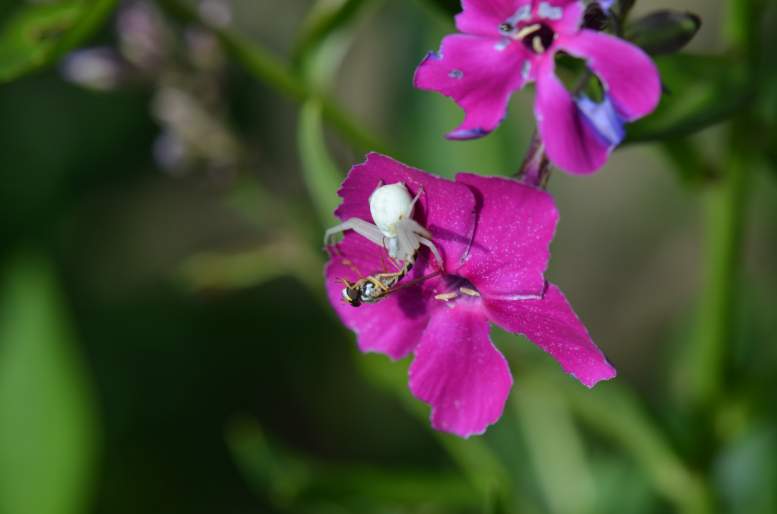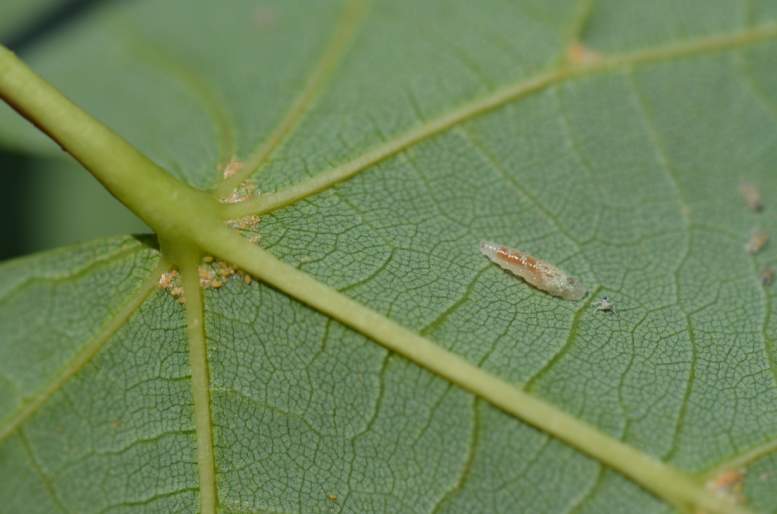Field margins can:
-
Increase in the level of pollination.
-
Enhance the level of natural pest control. Reduce the need to use insecticides.
-
Reduce erosion, both by wind and water.
-
Reduce drift and run-off of fertilizers and pesticides into the adjacent water bodies.
-
Increase appreciation of the arable landscape by citizens.
In the text below, we elaborate on the usefulness of field margins in pest control and in reducing erosion.
Pest control
Field margin strips support natural pest control by:
-
acting as a permanent source habitat for natural enemies (such as carabid beetles, spiders) from where it can spread into the crop field, or
-
providing food or shelter when these are critically needed, e.g. pollen and nectar for species with ontogenetic diet shifts, such as green lacewings and predatory hoverflies (van Rijn & Wäckers 2016). If flowers are a limiting resource obviously depends on the landscape your farm is located in (Rusch et al., 2016; Van Rijn, 2017).
1. Field margin as permanent habitat
Strips of vegetation in the margins of crop fields can be the habitat of many (ground-active) predators including many different types of spiders, ground beetles (Carabidae) and rove beetles (Staphylinidae) (Mansion-Vaquie et al., 2017). These species can live in a field margin when it provides a minimum of resources needed during all stages of their life cycle (Kampichle et al. 2000). This includes prey both for young and mature stages, cover against frost in winter (Pfiffner & Luka, 2000; Galle et al., 2018), cover to hide from their (intraguild) predators (Davey et al., 2013), etc.

Crab spider catching a hoverfly (Foto: HOGENT)
The predators living in these strips can be triggered to move into the crop field
-
to avoid competition when - after reproduction – local densities increase, and/or
-
to benefit from high prey levels in the crop field e.g. due to pest outbreaks.
Field margin characteristics
To support generalistic, ground-dwelling predators the field margin should meet the following characteristics (Kampichler et al., 2000):
-
permanent, mature, little disturbed,
-
width 3 meter or more,
-
have multiple perennial plant species, combining grasses and forbes (Mansion-Vaquie et al., 2017),
-
sufficient cover in the winter (no mowing in autumn or winter) (Pywell et al., 2005)
-
connected with other non-crop habitats.
To affect the pest control in the adjacent crop fields, species inhabiting these field margins should not be too different from those (potentially) inhabiting the crop fields, which is partly determined by the structure and family composition of the two habitats. Grassy field margins are therefore more effective for pest control by spiders and other ground-dwelling predators in cereal crops than other semi-natural habitats (Mansion-Vaquie et al., 2017).
This report (NL) provides more information on the role of field margins as habitat for beneficial insects.
2. Field margin as source of floral food
Due to a better understanding of the life cycles of beneficial insects, we now know that for many of them floral resources are essential for their existence. Many natural enemies of our pests are feeding on prey or hosts in their larval phase, while feeding on flowers when they are adults.

Larvae of predatory gall midge looking for aphids (foto: HOGENT)
Erosion: wind and water
By implementing flower strips the soil is covered during a considerable period of the year. The effect of water and soil erosion are reduced by soil covering with (deep) rooting plants. A second effect is created when a flower strip is on the border of a sloping field: the flower strip can collect and retain the eroded particles when erosion occurs at a different location on the field.
Flower strips can be implemented on each soil type and with every crop rotation. Only a part of the field is taken as a flower strip. A perennial mixter of flowers is more effective because you only sow it once every 4 years, thus a less managed soil and a deeper rooting. The orientation of a flower strip is important in case of wind erosion. A flower strip is limited in height, thus it will not break the wind. However, it can slow wind speeds and can catch loose erosion particles from soil next to the flower strip. For water erosion it is important that the flower strip is at the bottom of the slope.
A possible challenge might occur when water erosion causes sludge to accumulate on the flower border. A lot of flowers cannot stand this. This can be solved by selecting a special mixture with species that can withstand this. Adding more non-competitive grasses to the mixture is also a way to get a firmer sod.
Flower strip next to fodder beets (Belgium)